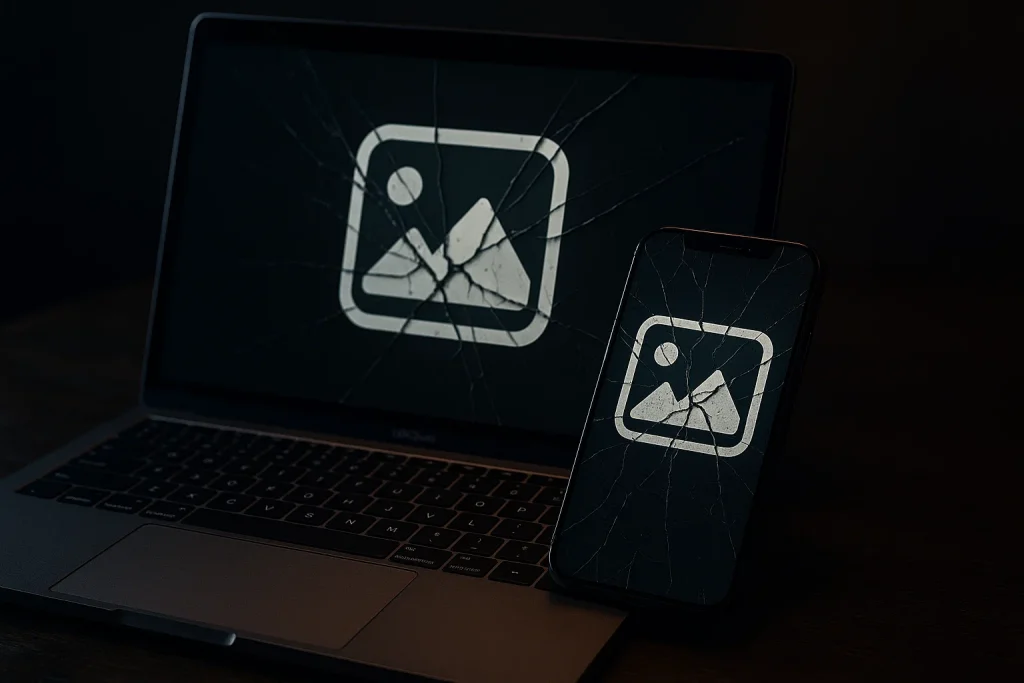Picture this: you’re sipping your morning coffee, scrolling through messages, when a friend sends you a photo. You don’t think twice — it’s just another image. But hidden inside that picture could be a silent intruder, slipping past Apple’s defenses and straight into your device. No taps, no downloads, no suspicious links — just a single image.
That’s the unsettling reality behind Apple’s latest zero-day exploit, one serious enough that the U.S. Cybersecurity and Infrastructure Security Agency (CISA) has ordered federal agencies to patch it immediately. Rated 8.8 out of 10 in severity, this flaw isn’t just a technical hiccup. It’s a new chapter in the cat-and-mouse game between hackers and device makers — and it’s a reminder of how fragile our digital safety can be in 2025.
What Exactly Happened?
CISA issued a directive requiring government agencies to patch Apple devices by September 11, 2025. The bug, tracked as CVE-2025-43300, lives inside Apple’s ImageIO framework — the system that processes images across iOS, iPadOS, and macOS.
Here’s what makes it especially dangerous: it’s a zero-click exploit. You don’t need to open a shady email, tap a sketchy link, or download a weird file. Just receiving and processing a malicious image — something as ordinary as a photo in your messages — can trigger it.

Why Images Became the New Weapon
Why Images Became the New Weapon
Hackers adapt fast. According to researcher Aidan Holland, Apple has tightened defenses around links from unknown senders, making phishing harder. So attackers switched strategies: instead of luring you into clicking, they hide malicious code inside image files.
And it’s clever — because images are everywhere. We share them daily in chats, emails, even work documents. Most of us never stop to think that a harmless-looking picture could be a Trojan horse.
Who’s Behind It?
Apple hasn’t said much, but security experts point to spyware vendors — companies that build and sell high-end exploits to governments and private actors. These aren’t random hackers in basements; we’re talking well-funded players.
We’ve seen this before. In 2023, the BLASTPASS exploit chain targeted the same ImageIO framework and was used to deliver Pegasus spyware from the NSO Group — a tool governments have used to monitor activists, journalists, and political rivals. CVE-2025-43300 feels like déjà vu.

Should Regular Users Be Worried?
Here’s the good news: the attacks so far seem to be highly targeted. Apple even used the phrase “extremely sophisticated attack against specific individuals” — wording they don’t throw around lightly. That suggests it’s being used surgically, not as a mass attack.
But — and this is key — zero-days don’t stay exclusive for long. Once knowledge spreads, the risk of copycat exploits grows. Even if the average user isn’t the target today, the safest move is to treat this seriously.
What You Should Do Right Now
-
Update your devices. Whether you’re on iPhone, iPad, or Mac, install Apple’s latest patch immediately.
-
Be cautious with images. Avoid opening files from people you don’t know, even if they look harmless.
-
For businesses: remind employees not to download unsolicited files, and tighten IT policies around file sharing. One careless click (or in this case, no click at all) can expose an entire network.
The Bigger Picture: Cybersecurity in 2025
The rise of zero-click exploits is changing the game. They bypass the usual red flags — no suspicious links, no dodgy downloads — making them harder to detect and defend against. For individuals, this reinforces a simple truth: updates aren’t optional anymore, they’re survival.
For organizations, the takeaway is broader: cybersecurity isn’t just about tech, it’s about awareness. Attackers don’t need to fool you if they can hijack something as common as a photo. Training, patching, and proactive defense matter more than ever.
And at a higher level, this incident fuels the debate around surveillance tech. If zero-days are being hoarded and sold to governments, how do we balance national security, privacy, and human rights in a world where one photo can be weaponized?
FAQs
1. What is CVE-2025-43300?
It’s a zero-day vulnerability in Apple’s ImageIO framework that lets attackers compromise devices using malicious image files.
2. Why is this exploit dangerous?
Because it’s zero-click — no interaction required. A single image is enough to trigger it.
3. Which devices are affected?
iPhones, iPads, and Macs running iOS, iPadOS, or macOS before Apple’s latest patch.
4. Who is most at risk?
High-profile targets like journalists, politicians, and executives. But any unpatched device is technically vulnerable.
5. How can I protect myself?
Update your devices right away and avoid opening files from unknown sources.


